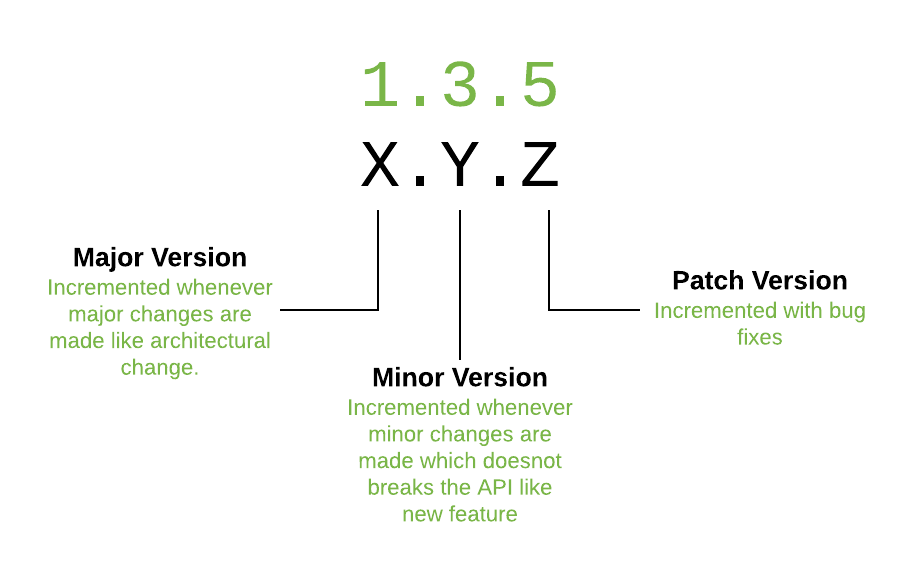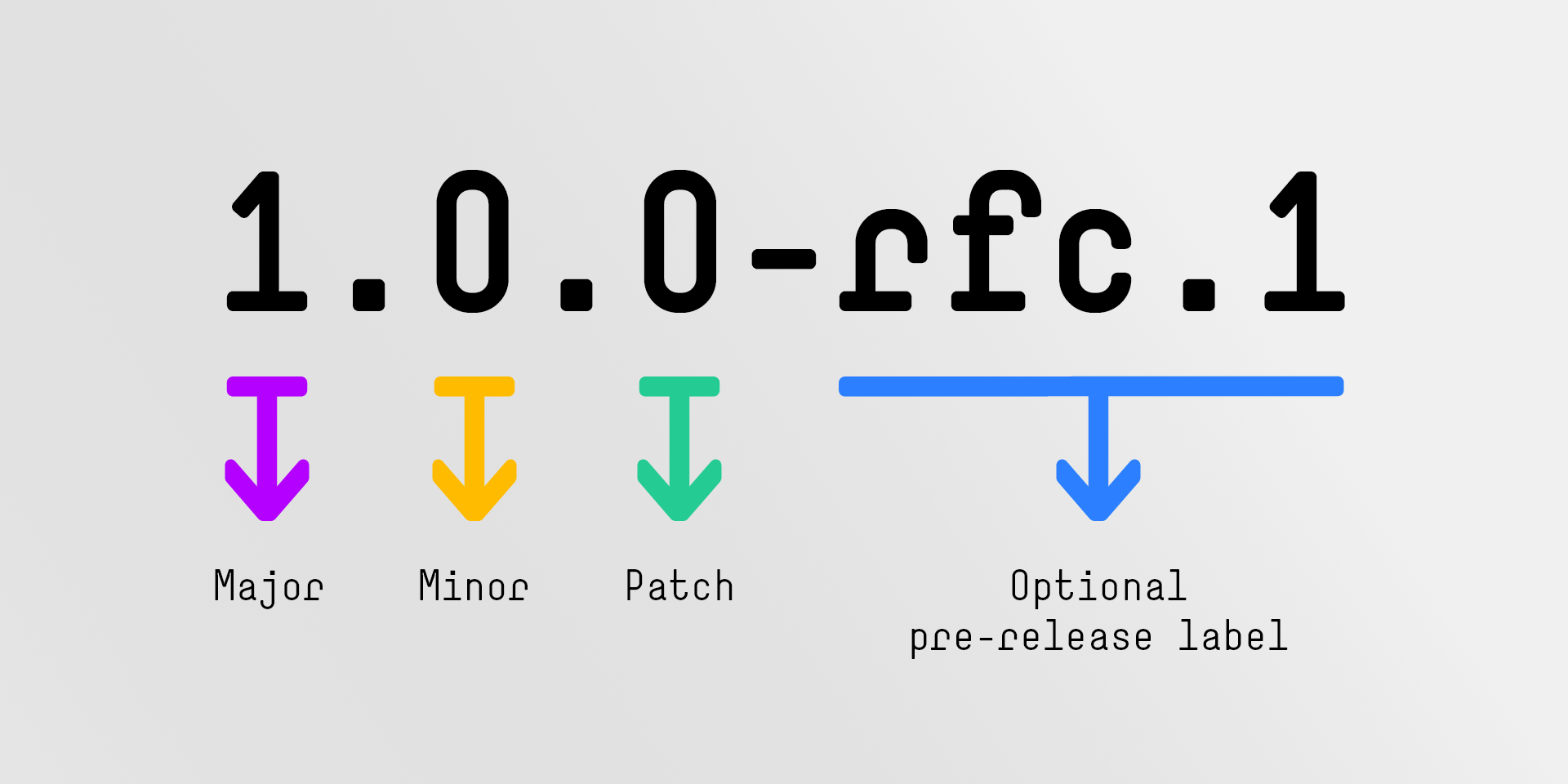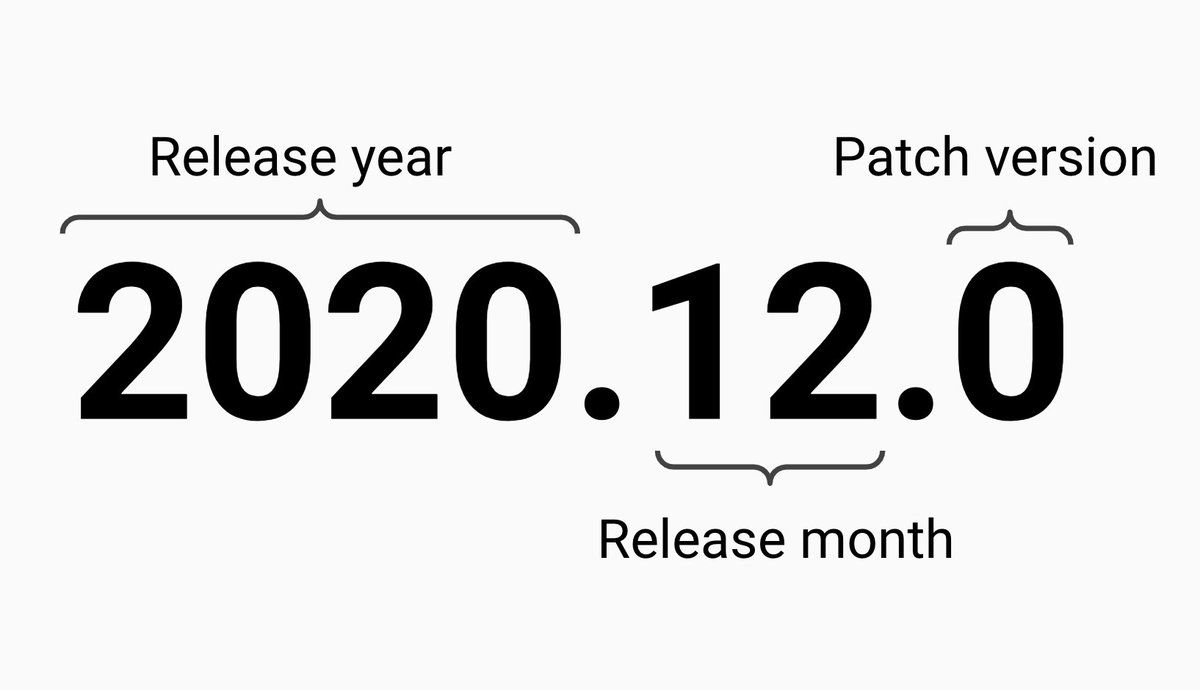SemVer: Release Software with Better Clarity and Backwards Compability Support
Semantic versioning, or SemVer, is a vital tool in the world of software development that helps streamline the process of managing and updating software projects.

Introduction
Semantic versioning, or SemVer, is a vital tool in the world of software development that helps streamline the process of managing and updating software projects. In this comprehensive guide, we will delve into the intricacies of semantic versioning, explore its origins, and provide insight into its practical implementation and impact on the broader software ecosystem.
What is Semantic Versioning (SemVer)?
Semantic versioning is a standardized system that assigns version numbers to software projects, following a specific format: MAJOR.MINOR.PATCH. Each component represents a different level of change:
- MAJOR: Indicates breaking or incompatible changes
- MINOR: Denotes new features that are backward-compatible
- PATCH: Reflects bug fixes or small changes that maintain backward compatibility
In addition to the core version number, SemVer allows for the inclusion of pre-release and build metadata, which provide additional information about the software's development stage or build environment.

Origins
Before SemVer, software versioning often lacked consistency and clarity, leading to confusion and miscommunication between developers and users. Semantic versioning emerged as a solution to these challenges, promoting a standardized and easily understandable system. One of the key principles of SemVer is backward compatibility, ensuring that updates or new features do not break existing functionality.
Semantic versioning was first proposed by Tom Preston-Werner, co-founder of GitHub, in 2009. His goal was to create a simple and consistent versioning system that would improve collaboration and communication among developers. Following the proposal, SemVer.org was formed to provide guidelines and resources for implementing SemVer. The standardized system quickly gained traction in the software industry and is now widely adopted by numerous projects and organizations.
Semantic versioning has become popular for several reasons:
- Clarity and ease of understanding: SemVer's format is simple and straightforward, allowing developers and users to quickly comprehend the nature of changes in a new version.
- Improved collaboration and communication: By adhering to a standardized system, developers can easily communicate changes to team members and users, facilitating collaboration.
- Simplified dependency management: SemVer helps developers manage dependencies in their projects by clearly indicating compatibility between different versions of a software package.
- Integration with package managers and repositories: Popular package managers like npm and repositories like Maven have adopted SemVer, making it a crucial aspect of the software development ecosystem.
Semantic versioning has become an integral part of the software development ecosystem:
- Popular projects using SemVer: Numerous well-known projects, such as Angular, React, and Node.js, have adopted semantic versioning to manage their releases.
- The role of SemVer in open-source communities: SemVer is particularly popular in open-source communities, where it promotes transparency, communication, and collaboration among contributors.
- Related versioning systems: Other versioning systems, like calendar versioning (CalVer) and romantic versioning, follow different principles and use cases. SemVer is distinguished by its focus on backward compatibility and clear communication of changes.
Implementation
Starting a new project
Begin with version 0.1.0 for the initial development phase. As the project progresses, update the MINOR and PATCH versions accordingly to reflect new features and bug fixes. Once the project is stable and production-ready, increment the MAJOR version to 1.0.0.
Migrating an existing project
Analyze the current versioning system and map it to the SemVer format. If necessary, create a conversion plan to transition from the old system to SemVer, clearly documenting the changes.
Best Practices
When implementing SemVer, ensure that:
- Breaking changes always result in a MAJOR version increment.
- Backward-compatible features lead to a MINOR version increment.
- Bug fixes or small changes trigger a PATCH version increment.
- Pre-release versions are denoted with a hyphen followed by an identifier, such as 1.0.0-beta.
- Build metadata can be added using a plus sign followed by an identifier, like 1.0.0+build.123.
Edge Cases
Be prepared to handle various situations that may arise during development, such as:
- Reverting a breaking change: If a breaking change is reverted, increment the MAJOR version to reflect the change in compatibility.
- Deprecating features: When deprecating features, increment the MINOR version and provide clear documentation about the deprecation and its implications.
- Multiple changes in a single release: If a release contains multiple types of changes (e.g., new features and bug fixes), increment the version component that corresponds to the most significant change.
Benefits of using SemVer
Semantic versioning offers several benefits for both developers and users:
- Improved project management: SemVer provides a clear and standardized system for tracking and communicating changes, making project management more efficient.
- Easier software updates: By adhering to SemVer principles, developers can ensure that updates are backward-compatible and minimize the risk of breaking changes.
- Streamlined dependency management: Semantic versioning simplifies dependency management by clearly indicating compatibility between different software versions.
- Enhanced user experience and trust: Users can easily understand the implications of updating to a new version, fostering trust and confidence in the software.
SemVer vs CalVer vs Romantic Versioning
Semantic Versioning (SemVer) focuses on backward compatibility and offers a clear understanding of the changes between versions. It is widely used and well-suited for software libraries and APIs.
Calendar Versioning (CalVer) emphasizes timestamps and is ideal for time-sensitive projects or those requiring regular, scheduled updates. Romantic Versioning, on the other hand, uses descriptive names or phrases for versioning, making it more suitable for creative projects where the focus is on artistic expression or thematic naming rather than a strict understanding of compatibility or changes between versions.

Here is a table comparing the features of Semantic Versioning (SemVer), Calendar Versioning (CalVer), and Romantic Versioning:
| Feature | Semantic Versioning (SemVer) | Calendar Versioning (CalVer) | Romantic Versioning |
|---|---|---|---|
| Versioning Format | MAJOR.MINOR.PATCH | YY.MM.DD(.MICRO) | Name or Phrase |
| Focus | Backward compatibility | Timestamps | Descriptive names |
| Clarity of Changes | High | Low | Low |
| Ease of Understanding | High | Moderate | Low to Moderate |
| Backward Compatibility | Emphasized | Not Emphasized | Not Emphasized |
| Dependency Management | Simplified | More Complex | More Complex |
| Popularity | Widely Adopted | Some Adoption | Limited Adoption |
| Best Suited For | Software libraries, APIs | Time-sensitive projects | Creative projects |
| Example Projects | Angular, React, Node.js | Ubuntu, Pytz | Games, Art Projects |
About 8grams
We are a small DevOps Consulting Firm that has a mission to empower businesses with modern DevOps practices and technologies, enabling them to achieve digital transformation, improve efficiency, and drive growth.
Ready to transform your IT Operations and Software Development processes? Let's join forces and create innovative solutions that drive your business forward.
Subscribe to our newsletter for cutting-edge DevOps practices, tips, and insights delivered straight to your inbox!
